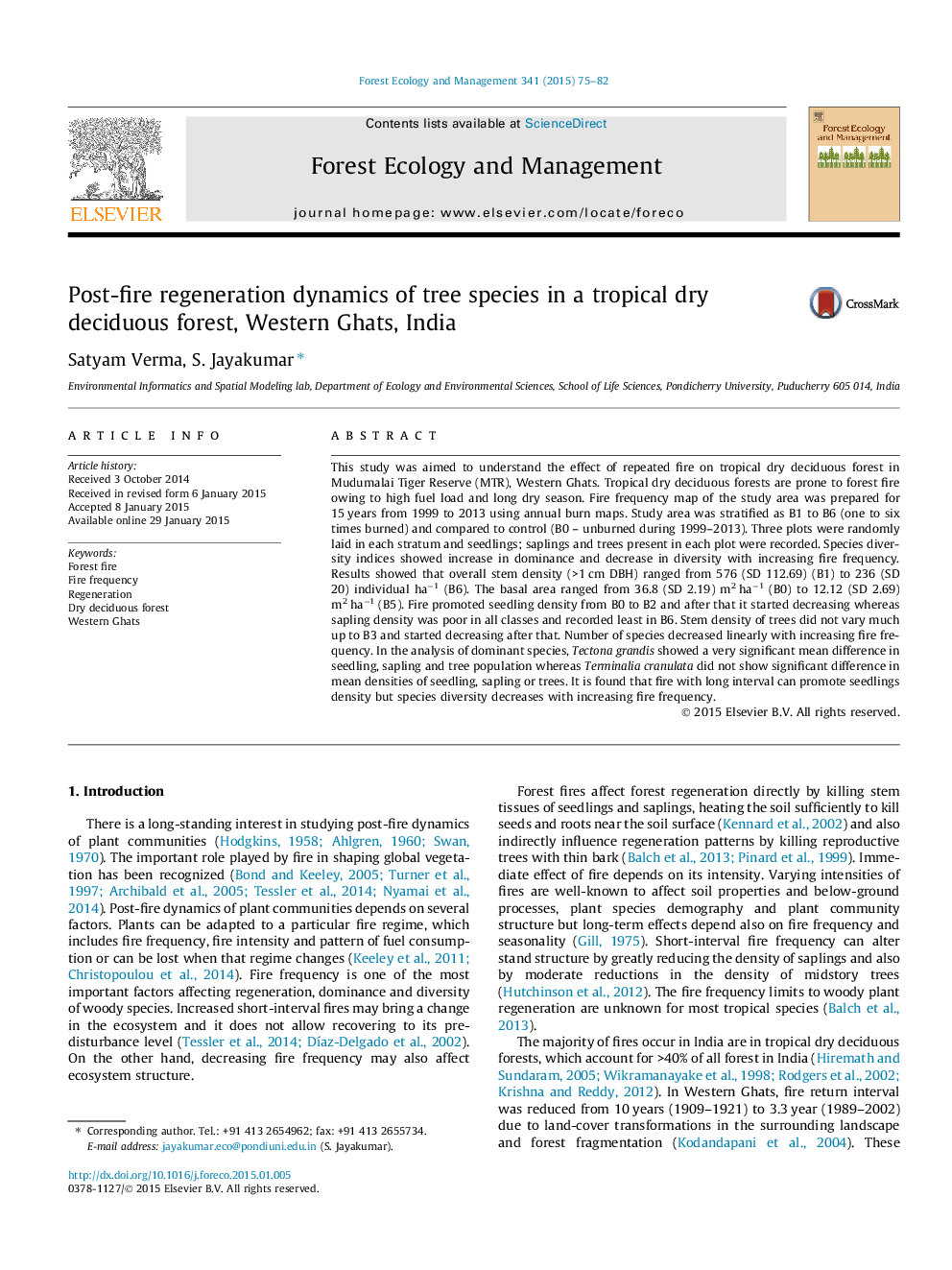| Article ID | Journal | Published Year | Pages | File Type |
|---|---|---|---|---|
| 86360 | Forest Ecology and Management | 2015 | 8 Pages |
•Six fire frequency classes were obtained in the study area, between 1999 and 2013.•Fire return interval is increased to 9.28 years from 3.3 year (1989–2002).•Tree diversity decreased with increasing fire frequencies.•Low fire frequencies promote seedling density.•Stem size between 1 and 20 cm dbh showed much variation across the fire classes.
This study was aimed to understand the effect of repeated fire on tropical dry deciduous forest in Mudumalai Tiger Reserve (MTR), Western Ghats. Tropical dry deciduous forests are prone to forest fire owing to high fuel load and long dry season. Fire frequency map of the study area was prepared for 15 years from 1999 to 2013 using annual burn maps. Study area was stratified as B1 to B6 (one to six times burned) and compared to control (B0 – unburned during 1999–2013). Three plots were randomly laid in each stratum and seedlings; saplings and trees present in each plot were recorded. Species diversity indices showed increase in dominance and decrease in diversity with increasing fire frequency. Results showed that overall stem density (>1 cm DBH) ranged from 576 (SD 112.69) (B1) to 236 (SD 20) individual ha−1 (B6). The basal area ranged from 36.8 (SD 2.19) m2 ha−1 (B0) to 12.12 (SD 2.69) m2 ha−1 (B5). Fire promoted seedling density from B0 to B2 and after that it started decreasing whereas sapling density was poor in all classes and recorded least in B6. Stem density of trees did not vary much up to B3 and started decreasing after that. Number of species decreased linearly with increasing fire frequency. In the analysis of dominant species, Tectona grandis showed a very significant mean difference in seedling, sapling and tree population whereas Terminalia cranulata did not show significant difference in mean densities of seedling, sapling or trees. It is found that fire with long interval can promote seedlings density but species diversity decreases with increasing fire frequency.
